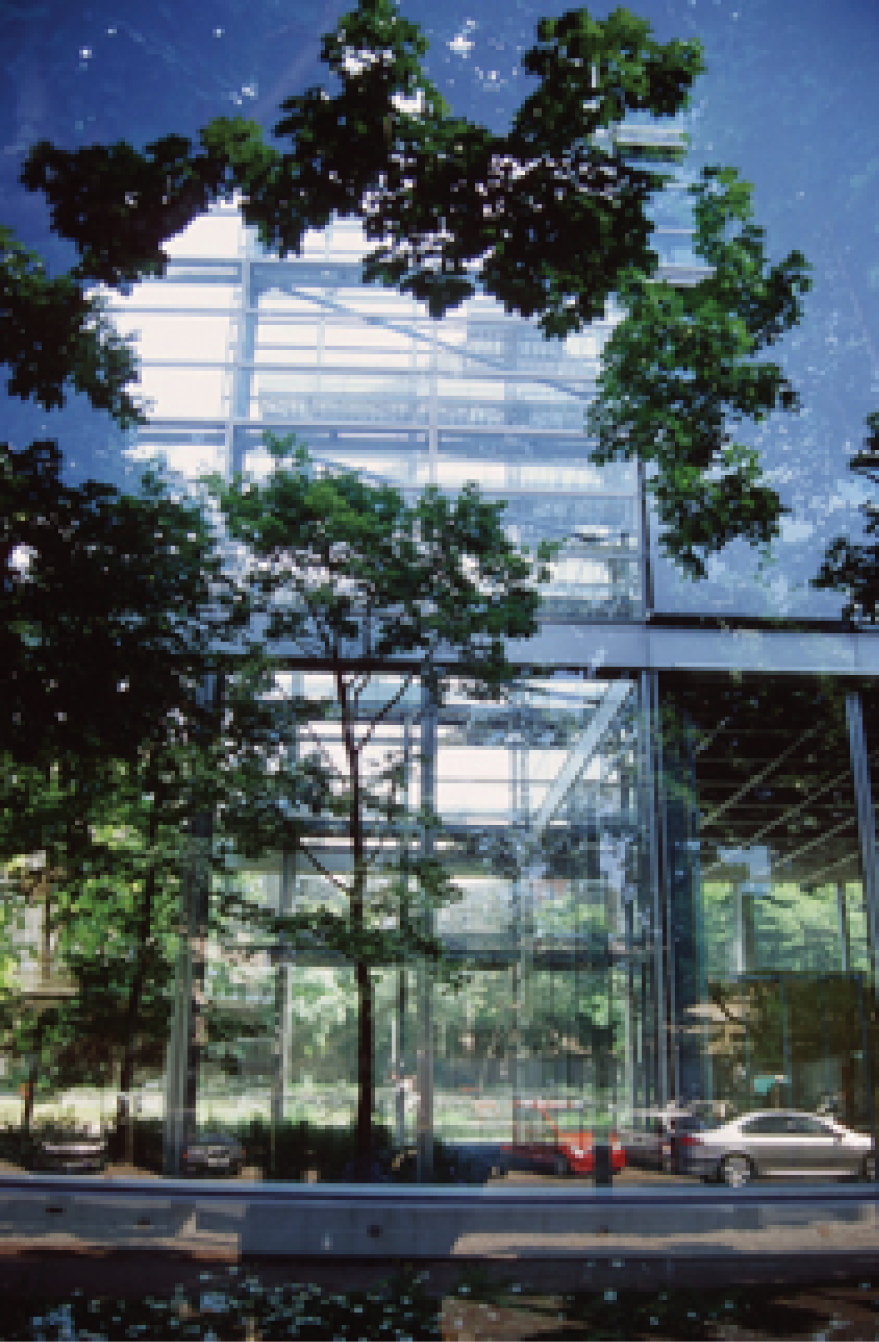
One of my favorite works of architecture is Jean Nouvel’s Cartier Foundation for Contemporary Art, constructed in Paris in 1994. It is a simple rectangular building — half of which is submerged underground. The visible portion is situated in an informal garden amidst four parallel glass walls. Two of the glass walls hug the sides of the building but extend beyond its edges. Two additional glass walls maintain the building line on the street and are stabilized by the building. The layers of glass, landscape and building make it nearly impossible to detect the limits of the structure. As you pass beyond each glass plane the street, building and garden begin to pull apart — revealing the distinct yet complimentary elements.
While visiting the building and taking this photograph I recall hearing several locals questioning the appropriateness of a corporate foundation, funded by a luxury jeweler, making decisions regarding what “art” is viewed by society and saved for the enrichment of future generations. Blurring the lines between corporate interests and cultural enrichment is rarely questioned in the United States; however, it occurred to me that — like Nouvel’s building — transparency does not always produce clarity.
